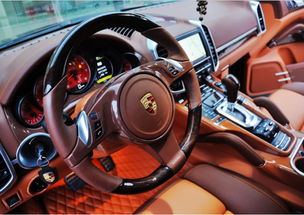个性车内饰图
```html
Personalized Automotive Interiors
Personalization in automotive interiors is a growing trend, allowing car owners to tailor their vehicle's interior to their preferences, lifestyle, and aesthetic taste. From luxurious materials to advanced technology integration, personalized automotive interiors offer a unique driving experience. Let's delve into the key aspects and considerations:
One of the primary ways to personalize an automotive interior is through the selection of materials and finishes. Here are some popular options:

- Leather: Known for its luxurious feel and durability, leather upholstery adds a touch of elegance to any car interior.
- Alcantara: A highend synthetic suedelike material, often used for seats and trim, providing both style and comfort.
- Wood Trim: Wooden accents, such as walnut or maple, can enhance the interior's sophistication and create a warm ambiance.
- Carbon Fiber: For a sporty and modern look, carbon fiber elements are popular, especially in performance vehicles.
Automotive manufacturers and aftermarket specialists offer various customization options to cater to individual preferences:
- Color Palette: Customers can choose from a wide range of colors for upholstery, stitching, and trim to match their personality or complement the car's exterior.
- Embroidery and Monograms: Personalized embroidery or monograms on seats, headrests, or floor mats add a unique touch and make the interior stand out.
- Illuminated Elements: Ambient lighting with customizable colors and intensity levels can create a personalized atmosphere inside the vehicle.
- Technology Integration: Advanced infotainment systems, including personalized interfaces and voice recognition, enhance the driving experience.
Personalized automotive interiors should prioritize comfort and ergonomics to ensure an enjoyable driving experience:
- Seat Adjustability: Customizable seating positions, lumbar support, and heating/cooling functions contribute to comfort during long drives.
- Driver Assistance Features: Adaptive cruise control, lanekeeping assist, and other driver assistance technologies enhance safety and reduce fatigue.
- Noise Insulation: Highquality insulation materials minimize road noise, providing a quieter and more serene cabin environment.
With increasing awareness of environmental issues, there's a growing demand for sustainable and ecofriendly materials in automotive interiors:
- Recycled Materials: Upholstery made from recycled fabrics or ecoleather derived from plantbased sources reduces environmental impact.
- LowEmission Adhesives: Environmentally friendly adhesives and finishes help minimize VOC emissions, contributing to healthier indoor air quality.
- Biobased Plastics: Interior components made from biobased plastics, derived from renewable sources like corn or sugarcane, offer a greener alternative to traditional plastics.
To preserve the personalized interior and ensure longevity, proper maintenance and care are essential:
- Regular Cleaning: Follow manufacturer guidelines for cleaning and conditioning leather, fabric, and other materials to prevent stains and deterioration.
- Protection from Sunlight: Use window shades or park in shaded areas to minimize UV exposure, which can cause fading and cracking of interior surfaces.
- Professional Detailing: Periodic detailing by professionals helps maintain the interior's pristine condition and prolongs its lifespan.
Overall, personalized automotive interiors offer car owners the opportunity to express their individuality and enhance their driving experience. Whether it's through luxurious materials, advanced technology, or ecofriendly options, customization allows for a tailored and enjoyable journey on the road.
